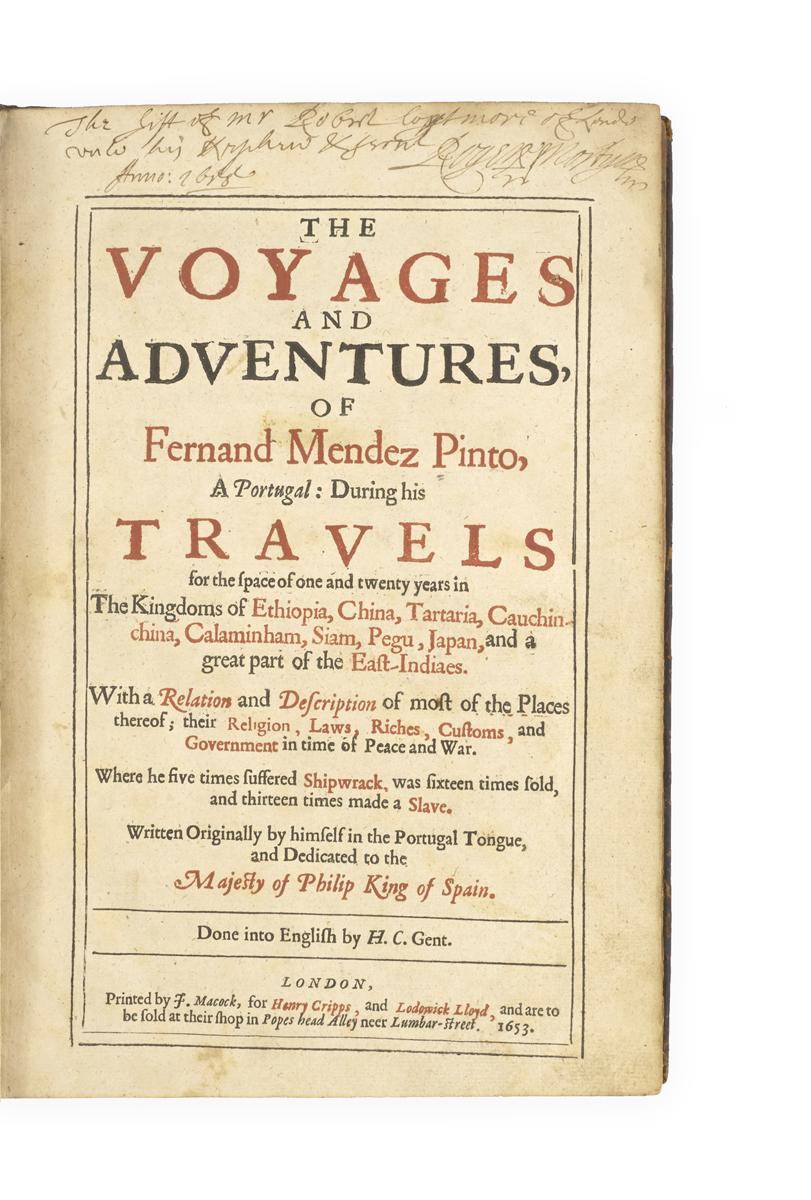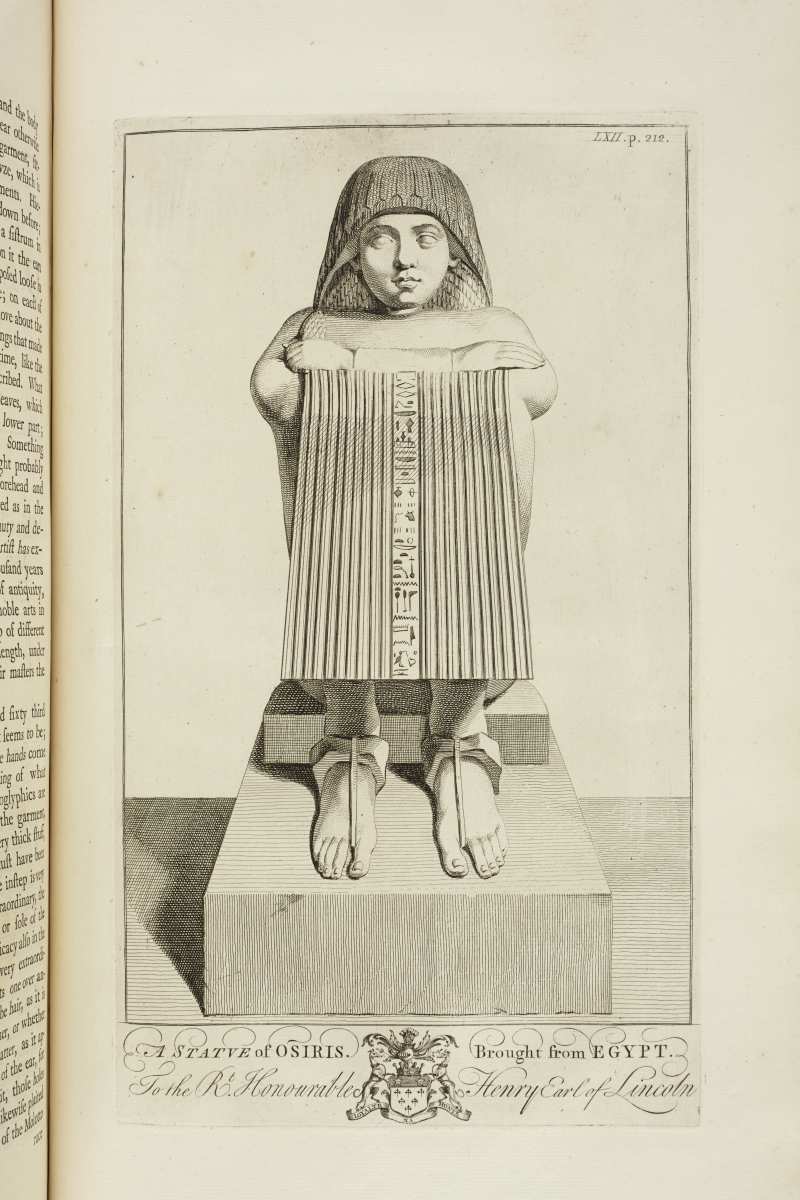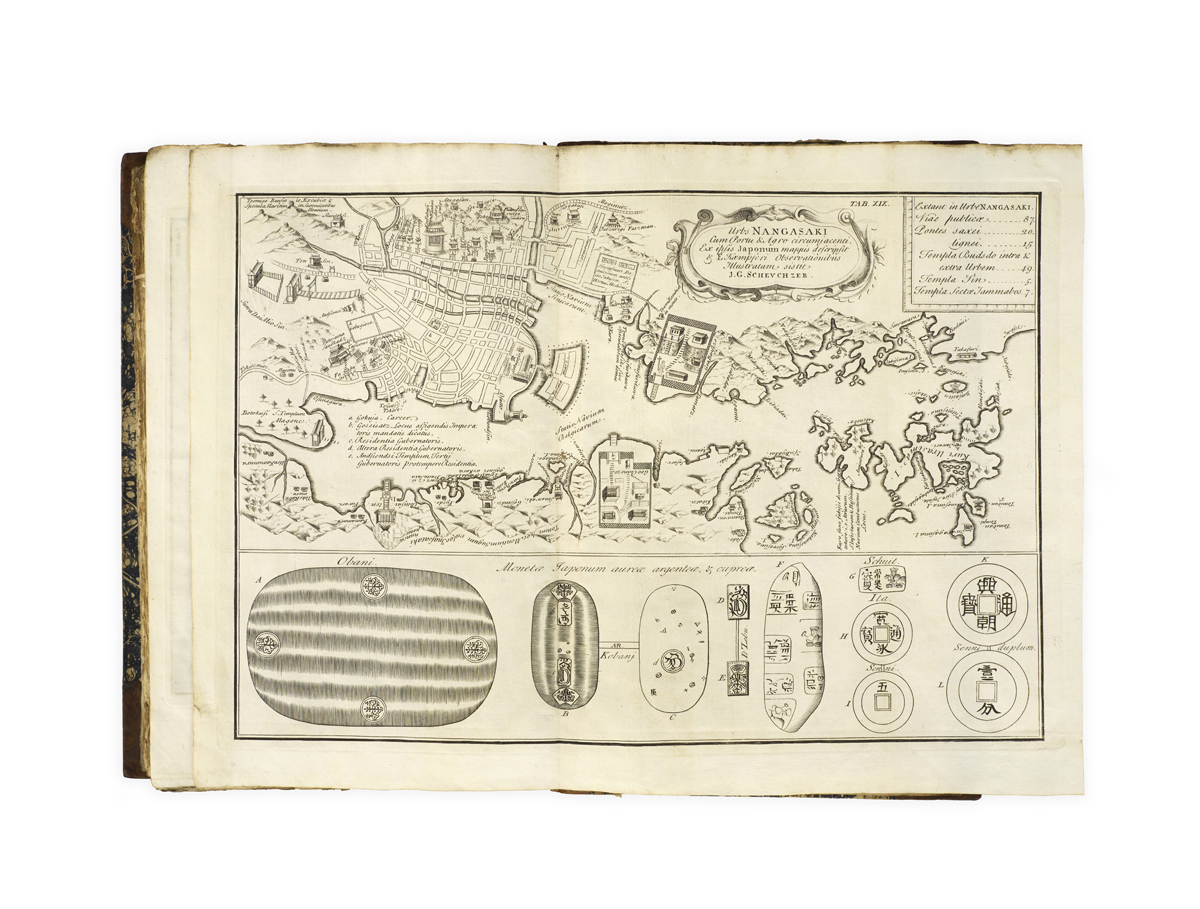
MENDES PINTO, Fernão.
The Voyages and Adventures of Fernand Mendez Pinto, a Portugal: during his travels for the space of one and twenty years in the Kingdoms of Ethiopia, China, Tartaria, Cauchin-china, Calaminham, Siam, Pegu, Japan, and a great part of the East-Indiaes. With a relation and description of most of the places thereof; their religion, laws, riches, customs, and government in time of peace and war …
London, Printed by J. Macock, for Henry Cripps, and Lodowick Lloyd … 1653.
Folio, pp. [14], 326; title-page printed in red and black, woodcut headpieces and initials; a very good copy in contemporary calf, later morocco spine label, fore-edge lettered ‘Pinto’, traces of a clasp (for a chain?) to upper front board only.

Added to your basket:
The Voyages and Adventures of Fernand Mendez Pinto, a Portugal: during his travels for the space of one and twenty years in the Kingdoms of Ethiopia, China, Tartaria, Cauchin-china, Calaminham, Siam, Pegu, Japan, and a great part of the East-Indiaes. With a relation and description of most of the places thereof; their religion, laws, riches, customs, and government in time of peace and war …
First edition in English, translated by Henry Cogan, of a travel best-seller, first published posthumously in 1614; there were nineteen editions in six languages by the end of the century, ‘rivalling the popularity of Cervantes’ Don Quixote. It is, in fact, an exotic and imaginative composite of fact and fiction, at once a picaresque prose epic and an authentic picture of sixteenth-century Asia’ (Rebecca D. Catz, The Travels of Mendes Pinto). Mendes Pinto sailed from Portugal in a fleet commanded by Vasco de Gama in 1537 and did not return for twenty-one years, during which time he had made four visits to Japan (he even falsely claimed to be the first European to do so), as well as India, Myanmar (Burma), Vietnam, and China.
Ever since the posthumous publication of his book, Pinto has lacked ‘neither detractors nor defenders, and the controversy still rages unabated in the learned world. Even in seventeenth-century England people took sides, for the taunt of Congreve’s clownish Foresight in Love for Love, “Ferdinand Mendes Pinto was but a type of thee, thou liar of the first magnitude”, is balanced by Dorothy Osborne’s charming commendation of his Peregrinaçam as “englished” by Henry Cogan Gent, in 1653, “ ’Tis as diverting a book of the kind as ever I read and is as handsomely written. You must allow him the privilege of a traveller, and he does not abuse it. His lies are as pleasant harmless ones, as lies can be, and in no great number considering the scope he has for them …’ … But if Pinto was not one of the actual European discoverers of Japan, it is equally certain that he was one of the earliest Portuguese travelers to that country, which he visited three or four times between 1544 and 1556. He had plenty of opportunity to know the real discoverers, and pass off their adventures (with suitable additions) as his own…" (C.R. Boxer, The Christian Century in Japan, Berkeley, 1951, pp. 18-24).
‘Gifted with keen imagination, he could exaggerate when expediency required, but he knew that in the account of his travels exaggeration was not expedient, and he was constantly on guard against the notorious scepticism of his fellow-countrymen. He may have heightened the colour occasionally, but as a rule he writes with restraint, although with delight in a good story and skill in bringing out the dramatic side of events … A hundred pictures refuse to fade from the memory, whether they are of silk-laden Chinese junks or jars of gold dust, vivid descriptions of shipwreck… or the awful pathos of the Queen of Martavão’s death, the sketch of a supercilious Chinese mandarin or of St Francis Xavier tramping through Japan’ (A.F.G. Bell, Portuguese Literature, 1922, pp. 224-5).
Provevance: inscription to head of title ‘The Gift of Mr Robert Coytmore of L… unto his nephew & g[od]son Roger Mostyn Anno 1658’ – Roger Mostyn (1620–1690), a prominent Royalist during the Civil War, was married to Mary Bulkeley, daughter of Thomas Bulkeley and Blanche Coytmore; inscription to endpaper in a different hand ‘This book belongs to the owner Sir R. M.’ i.e. Sir Roger Mostyn, third baronet (1673–1739); nineteenth-century booklabel of Gloddaeth Library (seat of the Mostyn family), subsequently lot 906 in the Mostyn sale, Christie’s 24 October 1974 (£160).
Cordier, Japonica, 39; Hill, p. 198; Lust, 346; Wing, M1705.

